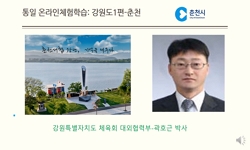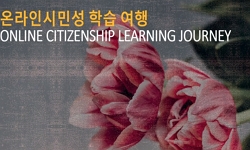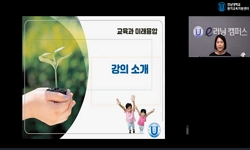지난 2018년, 10여 년 만에 개최된 남북정상회담은 남한에서 열린 최초의 남북정상회담으로서 그 의미가 남달랐다. 본 회담에서 발표된 ‘판문점선언’은 한반도 정전체결 65년 만에 남북이 ...
http://chineseinput.net/에서 pinyin(병음)방식으로 중국어를 변환할 수 있습니다.
변환된 중국어를 복사하여 사용하시면 됩니다.
- 中文 을 입력하시려면 zhongwen을 입력하시고 space를누르시면됩니다.
- 北京 을 입력하시려면 beijing을 입력하시고 space를 누르시면 됩니다.
https://www.riss.kr/link?id=T16811120
- 저자
-
발행사항
서울 : 숙명여자대학교 교육대학원, 2023
-
학위논문사항
학위논문(석사) -- 숙명여자대학교 교육대학원 , 미술교육전공 미술교육전공 , 2023. 8
-
발행연도
2023
-
작성언어
한국어
-
주제어
남북한 통합교육 ; 서예교육 ; 남북한 통합 서예교육 ; 통일교육
-
발행국(도시)
서울
-
형태사항
viii, 132 ; 26 cm
-
일반주기명
지도교수: 김향미
-
UCI식별코드
I804:11043-000000071280
- 소장기관
-
0
상세조회 -
0
다운로드
부가정보
국문 초록 (Abstract)
한편, 이러한 실정에도 불구하고 남한 측은 부단히 통일교육을 진행해 왔으며 이제는 통일을 준비하는 것을 넘어 실제 통일에 대비하여 통일 후 적용할 수 있는 남북한 통합교육에 대한 연구로 그 영역을 확대해 가고 있다. 통일에 대한 교육 전문가들은 통일 직후 과도기적 상황에서 이념의 고리가 적은 예체능 교과 개발을 통한 동질감 찾기를 대안으로 제시하고 있다. 이에 따라 미술교과 안에서도 현재까지 남북한이 공통적으로 배우고 있으며, 역사와 전통이 오래되었을 뿐만 아니라 우리나라만이 가지고 있는 독특한 문화 양식으로 남북한의 동질감 고취에 박차를 가할 수 있는 ‘서예’를 남북한 통합 미술교육 프로그램 개발의 한 축으로 설정하였다.
따라서 본 논문은 남북한 통합교육과 서예교육에 대한 고찰과 더불어 남북의 교육제도 및 미술 교과서 분석을 통해 남북한 통합 서예교육 프로그램을 제시하는 것을 연구의 목적으로 한다.
본 연구는 문헌 분석과 남북한 교육과정, 미술과 교육과정 및 중등교육 미술교과서의 비교 분석을 통해 진행되었으며, I장에서는 선행연구 분석을 통해 서예교육을 통해 남북한 학생들의 동질감을 강화하고 북한 학생들의 적응을 돕는 방안을 제시해야 한다는 것을 확인하였으며, 한반도의 평화통일을 위해 미술교육 분야에서의 노력이 필요하다는 주장을 제시한다.
제 Ⅱ장에서는 통합교육과 서예교육의 이론적 고찰을 통해 통합교육의 개념과 목적에 대해 알아보고, 그 현황과 제한점을 제시하였다. 또한 남북이 분단되기 이전과 이후의 한반도 서예교육의 역사와 그 필요성을 통해 통합교육에서의 서예의 효과와 필요성에 대해 알 수 있다.
제 Ⅲ장에서는 남북한의 교육 정책 및 제도, 미술 교육 과정, 미술교과서를 분석하고 이를 통해 남북한 통합 서예교육방안의 모색점을 찾아낸다. 이후 발견한 모색점을 기반으로 실질적인 남북한 통합 서예교육 프로그램을 작성하여 통일에 대비하는 방안을 제시한다. 이를 통해 남북한 학생들의 동질감을 높이는 동시에 통일 후 발생할 수 있는 혼란을 최소화하는 방안을 모색하였다.
결론적으로 본 연구를 통해 남북한의 미술교과서를 비교 분석하여 서예교육 방안을 모색하고 이를 통해 남북한 학생들의 동질감을 고취하고 북한 학생들의 문화적 적응을 돕는 방안을 제시한다. 이를 위해 남북한의 교육제도와 미술교육 과정을 분석하고, 이를 바탕으로 통합 서예교육 프로그램을 제작하였다. 이 연구 결과는 한반도의 평화통일을 대비한 실질적인 교육 방안을 제시하며 통일에 대비하는 학교 교육 현장에 실질적인 지침을 제공한다. 본 프로그램을 통해 남북한 학생의 동질감 회복 및 북한식 교육을 받은 학생들에게는 보다 친숙한 주제를 통해 자기 자신과 주변 환경에 대한 인식 및 이해와 창의적 소통방식을 익히는 데에 도움을 주는 효과를 기대한다.
지난 2018년, 10여 년 만에 개최된 남북정상회담은 남한에서 열린 최초의 남북정상회담으로서 그 의미가 남달랐다. 본 회담에서 발표된 ‘판문점선언’은 한반도 정전체결 65년 만에 남북이 함께 뜻을 모아 첫 종전선언을 발표한 역사적인 평화의 첫 발걸음이기도 하다. 이로서 한반도에도 평화의 봄이 찾아오는듯 하였으나, 그간 남한 정부의 지속적인 통일교육에 대한 노력에도 불구하고 아직까지 보다 더 발전된 평화통일에 대한 논의가 나오지 않고 있는 실정이다.
한편, 이러한 실정에도 불구하고 남한 측은 부단히 통일교육을 진행해 왔으며 이제는 통일을 준비하는 것을 넘어 실제 통일에 대비하여 통일 후 적용할 수 있는 남북한 통합교육에 대한 연구로 그 영역을 확대해 가고 있다. 통일에 대한 교육 전문가들은 통일 직후 과도기적 상황에서 이념의 고리가 적은 예체능 교과 개발을 통한 동질감 찾기를 대안으로 제시하고 있다. 이에 따라 미술교과 안에서도 현재까지 남북한이 공통적으로 배우고 있으며, 역사와 전통이 오래되었을 뿐만 아니라 우리나라만이 가지고 있는 독특한 문화 양식으로 남북한의 동질감 고취에 박차를 가할 수 있는 ‘서예’를 남북한 통합 미술교육 프로그램 개발의 한 축으로 설정하였다.
따라서 본 논문은 남북한 통합교육과 서예교육에 대한 고찰과 더불어 남북의 교육제도 및 미술 교과서 분석을 통해 남북한 통합 서예교육 프로그램을 제시하는 것을 연구의 목적으로 한다.
본 연구는 문헌 분석과 남북한 교육과정, 미술과 교육과정 및 중등교육 미술교과서의 비교 분석을 통해 진행되었으며, I장에서는 선행연구 분석을 통해 서예교육을 통해 남북한 학생들의 동질감을 강화하고 북한 학생들의 적응을 돕는 방안을 제시해야 한다는 것을 확인하였으며, 한반도의 평화통일을 위해 미술교육 분야에서의 노력이 필요하다는 주장을 제시한다.
제 Ⅱ장에서는 통합교육과 서예교육의 이론적 고찰을 통해 통합교육의 개념과 목적에 대해 알아보고, 그 현황과 제한점을 제시하였다. 또한 남북이 분단되기 이전과 이후의 한반도 서예교육의 역사와 그 필요성을 통해 통합교육에서의 서예의 효과와 필요성에 대해 알 수 있다.
제 Ⅲ장에서는 남북한의 교육 정책 및 제도, 미술 교육 과정, 미술교과서를 분석하고 이를 통해 남북한 통합 서예교육방안의 모색점을 찾아낸다. 이후 발견한 모색점을 기반으로 실질적인 남북한 통합 서예교육 프로그램을 작성하여 통일에 대비하는 방안을 제시한다. 이를 통해 남북한 학생들의 동질감을 높이는 동시에 통일 후 발생할 수 있는 혼란을 최소화하는 방안을 모색하였다.
결론적으로 본 연구를 통해 남북한의 미술교과서를 비교 분석하여 서예교육 방안을 모색하고 이를 통해 남북한 학생들의 동질감을 고취하고 북한 학생들의 문화적 적응을 돕는 방안을 제시한다. 이를 위해 남북한의 교육제도와 미술교육 과정을 분석하고, 이를 바탕으로 통합 서예교육 프로그램을 제작하였다. 이 연구 결과는 한반도의 평화통일을 대비한 실질적인 교육 방안을 제시하며 통일에 대비하는 학교 교육 현장에 실질적인 지침을 제공한다. 본 프로그램을 통해 남북한 학생의 동질감 회복 및 북한식 교육을 받은 학생들에게는 보다 친숙한 주제를 통해 자기 자신과 주변 환경에 대한 인식 및 이해와 창의적 소통방식을 익히는 데에 도움을 주는 효과를 기대한다.
다국어 초록 (Multilingual Abstract)
In contrast to this stalemate, the Republic of Korea has persevered in conducting unification education, broadening its scope to anticipate post-unification circumstances. To prepare for this eventuality, scholars in unification education propose fostering a sense of unity through the creation of art curricula devoid of heavy ideological connotations. Such programs could serve as transitional strategies following reunification. In line with this, 'calligraphy'—an art form with rich historical and cultural roots unique to Korea and still prevalent in the art curriculum—emerges as a prospective pillar for an integrated North-South Korean art education program, aimed at nurturing homogeneity between the two states.
The objective of this dissertation is to propose an integrated North-South Korean calligraphy education program, built upon a comprehensive analysis of both nations' educational systems, art textbooks, and current calligraphy education. This research employs literature reviews and comparative analysis of art education curriculum and textbooks from both regions.
Chapter I reviews prior studies to affirm that calligraphy education could reinforce homogeneity among Southern students and assist Northern students in adjusting to the new environment, emphasizing the necessity of endeavors in art education for peaceful reunification.
Chapter II delves into the definition and objectives of integrated education, examining its current state and constraints through a theoretical review of both integrated education and calligraphy education. It discusses the history of calligraphy education on the Korean Peninsula pre- and post-division and advocates for the inclusion of calligraphy in integrated education.
Chapter III presents a comprehensive analysis of the educational policies, systems, and art curricula in North and South Korea, and seeks viable solutions for an integrated North-South Korean calligraphy education. Drawing from these insights, it formulates a pragmatic calligraphy program to prepare for reunification, designed to enhance the homogeneity of North and South Korean students and reduce potential post-reunification confusion.
In conclusion, this dissertation introduces a calligraphy education program, derived from a comparative examination of North and South Korean art textbooks, aimed at fostering homogeneity among students and helping Northern students assimilate their culture. It dissects the educational systems and art curricula of North and South Korea, generating an integrated calligraphy education program in the process. The findings of this research offer practical guidance for schools gearing up for peaceful reunification on the Korean Peninsula. It is expected that the program will instill a renewed sense of unity among students from both Koreas, enabling those educated in the North to better comprehend themselves and their surroundings through familiar themes, and to learn innovative methods of communication.
The landmark Inter-Korean Summit of 2018, the first in over a decade to be held in the South, represented a significant step towards peace. The resulting 'Panmunjom Declaration', which symbolically marked the end of the Korean War 65 years post-armist...
The landmark Inter-Korean Summit of 2018, the first in over a decade to be held in the South, represented a significant step towards peace. The resulting 'Panmunjom Declaration', which symbolically marked the end of the Korean War 65 years post-armistice, seemingly ushered in a hopeful era of tranquility on the Korean Peninsula. However, even with the South Korean government's persistent attempts at promoting unification education, progress towards peaceful reunification remains stalled.
In contrast to this stalemate, the Republic of Korea has persevered in conducting unification education, broadening its scope to anticipate post-unification circumstances. To prepare for this eventuality, scholars in unification education propose fostering a sense of unity through the creation of art curricula devoid of heavy ideological connotations. Such programs could serve as transitional strategies following reunification. In line with this, 'calligraphy'—an art form with rich historical and cultural roots unique to Korea and still prevalent in the art curriculum—emerges as a prospective pillar for an integrated North-South Korean art education program, aimed at nurturing homogeneity between the two states.
The objective of this dissertation is to propose an integrated North-South Korean calligraphy education program, built upon a comprehensive analysis of both nations' educational systems, art textbooks, and current calligraphy education. This research employs literature reviews and comparative analysis of art education curriculum and textbooks from both regions.
Chapter I reviews prior studies to affirm that calligraphy education could reinforce homogeneity among Southern students and assist Northern students in adjusting to the new environment, emphasizing the necessity of endeavors in art education for peaceful reunification.
Chapter II delves into the definition and objectives of integrated education, examining its current state and constraints through a theoretical review of both integrated education and calligraphy education. It discusses the history of calligraphy education on the Korean Peninsula pre- and post-division and advocates for the inclusion of calligraphy in integrated education.
Chapter III presents a comprehensive analysis of the educational policies, systems, and art curricula in North and South Korea, and seeks viable solutions for an integrated North-South Korean calligraphy education. Drawing from these insights, it formulates a pragmatic calligraphy program to prepare for reunification, designed to enhance the homogeneity of North and South Korean students and reduce potential post-reunification confusion.
In conclusion, this dissertation introduces a calligraphy education program, derived from a comparative examination of North and South Korean art textbooks, aimed at fostering homogeneity among students and helping Northern students assimilate their culture. It dissects the educational systems and art curricula of North and South Korea, generating an integrated calligraphy education program in the process. The findings of this research offer practical guidance for schools gearing up for peaceful reunification on the Korean Peninsula. It is expected that the program will instill a renewed sense of unity among students from both Koreas, enabling those educated in the North to better comprehend themselves and their surroundings through familiar themes, and to learn innovative methods of communication.
목차 (Table of Contents)
- I. 서론 = 1
- 1. 연구의 필요성 및 목적 = 1
- 2. 연구 내용 및 방법 = 4
- 3. 선행연구 분석 = 5
- 1) 남북한 통합교육과 미술교육에 대한 연구 = 5
- I. 서론 = 1
- 1. 연구의 필요성 및 목적 = 1
- 2. 연구 내용 및 방법 = 4
- 3. 선행연구 분석 = 5
- 1) 남북한 통합교육과 미술교육에 대한 연구 = 5
- 2) 남북한 서예교육에 대한 연구 = 9
- 4. 연구의 제한점 = 13
- II. 이론적 배경 = 14
- 1. 남북한 통합교육에 대한 이해 = 14
- 1) 개념 및 목적 = 14
- 2) 남북한 통합교육과 미술 = 16
- 2. 서예교육에 대한 이해 = 17
- 1) 서예교육의 역사 = 17
- 2) 서예교육의 목적 및 효과 = 35
- 3) 통합교육에서의 서예의 필요성과 의의 = 36
- III. 남북한 교육체제 및 미술 교과서 비교 분석 = 38
- 1. 남북한 교육 정책과 제도 = 38
- 1) 교육 이념과 목표 = 38
- 2) 학제 및 교육과정 = 41
- 3) 학교급별 교육과정 = 46
- 2. 남북한 미술 교육 비교 분석 = 61
- 1) 성격 및 목표 = 61
- 2) 내용체계 = 63
- 3) 평가 = 65
- 3. 남북한 중등 미술 교과서 분석 = 70
- 1) 교과서 용어 비교 정리 = 71
- 2) 단원 및 구성내용 = 74
- 3) 영역별 비교 분석 = 80
- 4) 서예단원 비교 분석 = 84
- IV. 남북한 통합 서예교육 프로그램 개발 = 99
- 1. 프로그램 개요 = 99
- 2. 프로그램 개발 = 102
- 1) 학습 대상 = 102
- 2) 학습 목표 = 103
- 3) 지도상의 유의점 = 107
- 4) 평가 방향 및 계획 = 108
- 3. 수업지도안 = 110
- 4. 기대효과 = 122
- V. 결론 = 123
- 참고 문헌 = 126











